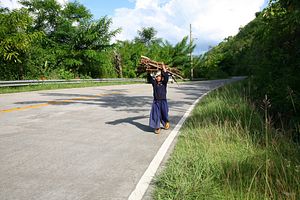Child labor exploitation is worsening in the Philippines. In 2011, the Philippine National Statistics Office reported that there were 5.5 million working children in the country, 2.9 million of whom were working in hazardous industries such as mines and plantations. The agency added that 900,000 children have stopped schooling in order to work. The following year, the Center for Trade Union and Human Rights (CTUHR) released a survey that showed that one out of four workers in palm oil plantations in northeast Mindanao region were children below 18 years old.
Last month, the Ecumenical Institute for Labor Education Research (EILER) published a baseline study which confirmed the prevalence of child labor in mines and plantations in various parts of the country. In plantation communities, about 22.5 percent of households have child workers. In mining towns, child labor incidence was 14 percent. The group noted that the youngest worker interviewed in the study was five years old, although the common age of child workers was 12. The group learned that 76 percent of child laborers have stopped attending school. Most child laborers were working for 10 hours a day, or 13 to 16 hours a day in some extreme cases.
Child laborers in oil palm fields often serve as fruiters, harvesters, haulers, loaders, and uprooters. Meanwhile, child laborers in sugarcane estates work in weeding, harvesting and fetching of water. Banana plantation workers are assigned in bagging and de-leafing duties. Outside banana plantations younger children are involved as banana peelers for rejected bananas which will be dried and processed as animal feeds.
In mines, child laborers usually fetch water, carry sacks of rocks, load thick logs that are used to support the underground tunnels, or become errand boys of regular workers. They are also reserve workers or relievers whenever regular miners cannot come to work.
Girls in mines work in gold panning or provide services to miners such as doing their laundry or cooking meals.
EILER observed that child workers are exposed to extreme weather conditions, long working hours, and harsh environments while using substandard tools and equipment. In plantations, trucks would pick children from their homes and bring them to makeshift tents that are located in nearby provinces to stay and work there from two weeks to one month without their parents. And since most plantations use harmful agro-chemicals, the children are also directly exposed to these threats.
Children in mines are handling dangerous tools and are made to work without personal protective equipment for long hours. They are also vulnerable to social hazards like the use of illegal drugs inside the tunnels to keep them awake for hours.
“The nature of their work which provides very little wages coupled with the fact that they skip school means that child laborers are unable to break from the families’ cycle of poverty, perpetuating the problem of inter-generational poverty among the poor families in the plantation and mining industries,” said Anna Leah Escresa-Colina, executive director of EILER.
She added that low wages, contractualization, and lack of livelihood for families as some of the factors pushing children to work even in hazardous and difficult jobs to augment family incomes.
Ambassador Guy Ledoux of the European Union emphasized that “it is important that dissuasive penalties are imposed in practice on persons who subject children to work in hazardous or exploitative conditions.” The EU provided assistance in conducting the study on child labor in the Philippines.
The EILER study confirmed earlier surveys about the high number of children working in hazardous industries. It also highlighted the failure or inadequacy of government initiatives to address the problem. As the world marks the 25th anniversary of the signing of the United Nations Convention on the Rights of the Child, the Philippines must be more aggressive in combating the worst forms of child labor in various parts of the country.
































